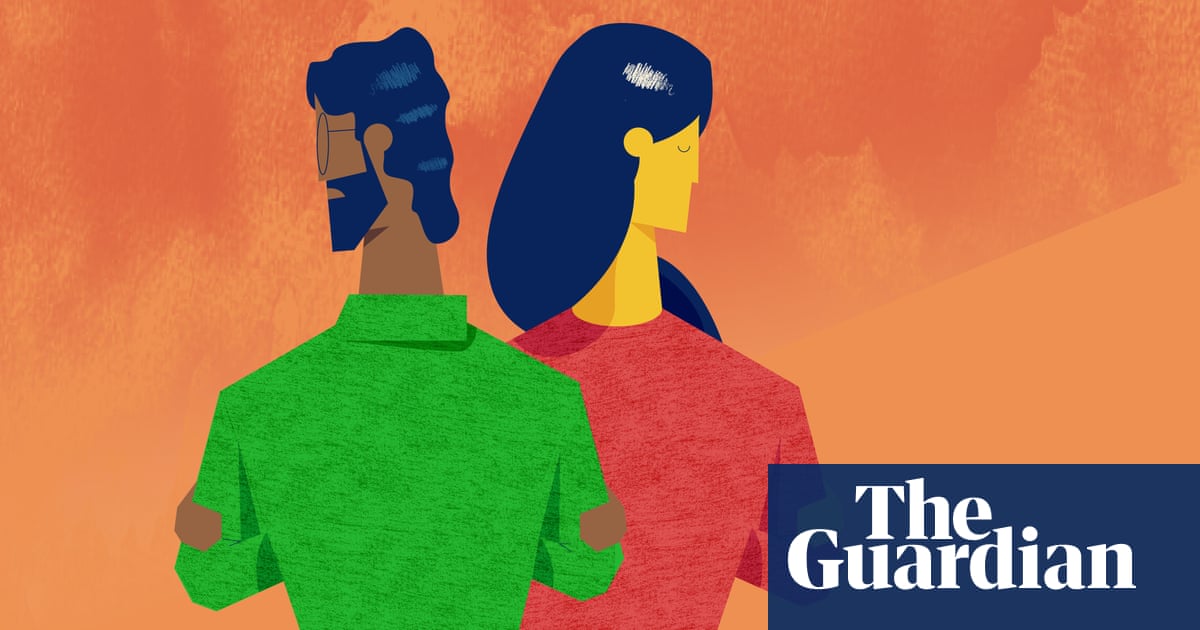
ith coronavirus making going to the cinema, a gig or the theatre a distant memory, there is one area of culture that is more accessible than ever: television. Live viewing has soared by 17% since the lockdown began, with the BBC and Channel 4 reporting huge increases in ratings. In March, ITV recorded its highest ever numbers for an entertainment show, when 11 million tuned into Ant and Dec’s first Saturday Night Takeaway without a studio audience.
But while most people are tuning into more shows than ever, millions around the world are still struggling to access them – including those with visual impairments. This frustration is felt by many, not least blind viewers in Wales, who were reported in February to be feeling like “second-class citizens” over the lack of audio-described original programming in the country.
Robert Kingett is a Chicago-based journalist who has been blind since childhood due to retinopathy of prematurity. As well as consuming fiction podcasts and audiobooks, he is an avid TV-watcher. However, the audio description he relies on to fully understand shows is often frustratingly irregular, depending on the channel or the streaming service. “Very little gets reported on in terms of the state and history of these accessibility matters,” he says, despite the fact that they could have benefits for sighted audiences, too. “You can listen to a movie while driving. You can listen to a movie at the gym or when you have eye fatigue, or if you don’t like reading subtitles.”
Sonali Rai is the audio description manager at the Royal National Institute of Blind People. She outlines how awareness has improved over the past decade. “After an RNIB campaign in 2010, BBC, Channel 4, Sky and ITV made a public commitment to broadcast a minimum of 20% of their programming with audio description, with the others still required to do at least 10%,” she explains. “However, if you look at the latest Ofcom access services report, most broadcasters seem to be achieving more than the legal requirement.”
Despite this, she says that online catchup and streaming services need to make serious improvements. “Some are performing really well, but most are still trying to find a way to standardise the delivery of the audio-description tracks on their apps across different platforms. We would like to see content providers consider accessibility when they start designing their services, so they are not trying to retrofit it later.”
Take Netflix, for example. The streaming giant offers more than 500 audio-described series and films – including original content such as House of Cards – although it can often seem that there is no consistency to its approach, as became clear when the fifth series of Black Mirror was released. “When it dropped, there was no audio description,” says Kingett. “There are no regulations that say streaming companies have to be accessible – there’s no standard, so things are nowhere near as organised or even reliable.”
It is not just providing audio description that is the issue, however. Often the hardware itself can prove prohibitive. Despite devices such as the latest Sky remote control, which allows for full voice control, there are still limitations, such as unreadable electronic programme guides. One deep frustration is that the level of care and attention given to the technology varies wildly between streaming services. Kingett speaks highly of Microsoft and Apple’s accessibility policies, but they are exceptions rather than the rule. “Apple made its entire Apple TV+ platform accessible – and no other company has audio description in multiple languages.”
Craig Reekie, 34, lives in Glasgow. He started to lose his sight a few years ago and finds voice remotes particularly beneficial. “With Amazon Prime Video [unlike many other services], you can adjust the subtitles so they’re really large or in inverted colours,” he says.
For Reekie, there is a catalogue of seemingly small things that could be solved with even cursory attention. Audio description has improved, he says, but it is still laughably spotty. “I have to ask my girlfriend what happened in the epilogue on First Dates, when there could be a voiceover.” For many, it can also be an alienating experience, and means being excluded from the everyday cultural conversations that form the backdrop to our lives. “I also think blind people are missing out on so many foreign films or TV shows that could easily be dubbed,” he adds.
The greatest irony Kingett has encountered was with Daredevil, the Netflix show about the blind Marvel superhero, which was released without audio description. There was also some confusion around the first season of the CW’s 2019 dramedy In the Dark, in which the blind lead character is played by the sighted actor Perry Mattfeld. The show’s network is not mandated to provide audio description, which led to viewers taking to Twitter wondering if the show would be accessible at all, despite its visually impaired characters. In the end, it was, although some asked why accessibility measures had been slipped in almost as an afterthought.
On-screen representation is one thing, but it is not just inadequate hardware or poor audio description that cause difficulties for the partially sighted viewer. The past few years have witnessed the rise of the silent episode. Shows as diverse as BoJack Horseman and Mr Robot have made use of silence as a means of pushing TV boundaries, even if it presents a new barrier for visually impaired viewers. Audio description is a more ambiguous benefit in this instance, even if it were to be attempted. Would audio description applied to these episodes render them more audiobook than TV? Are more inventive approaches needed when the content is more experimental?
Perhaps one of the answers is for programme-makers to start considering visual accessibility as a question of form, as well as presentation. Kingett described Apple TV+’s recent extinction parable, See, as that rarest of things – and hopefully a portent of a more accessible future – a show that gives the sighted a taste of what it feels like not to be the priority.
This is unlike the less technically ambitious Daredevil or In the Dark, which, despite their blind protagonists, don’t go as far as they might have. See takes it that bit further, with its use of blind actors and the hiring of a “blind consultant”, Joe Strechay, as well as the inclusion of a host of disabled actors and crew. The on-screen characters use braille and there is crystal-clear use of audio description. “For once, it’s the sighted population who need the world-building so they can put things together, but we get the gist of things right away,” says Kingett. “I love how blind people just live, love, kill and thrive in this world without adapting to it.”












